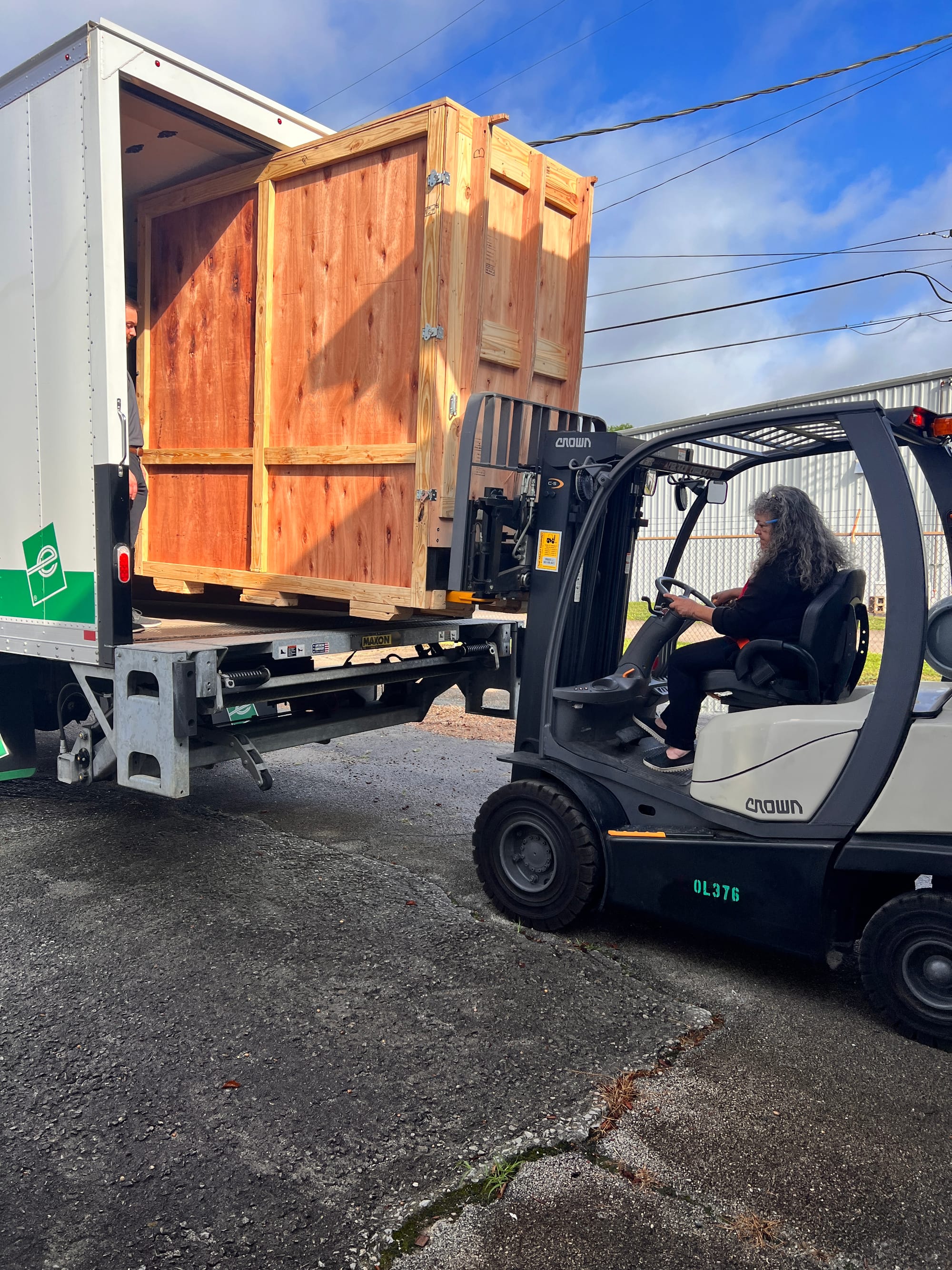Stop Selling Yourself Short: A Newbie's Guide to Profitable Freight Pricing for Box Trucks and Couriers

If you're new to the freight industry and driving a box truck or doing courier work, you've probably heard the complaints from seasoned carriers: "These newbies are destroying rates by accepting lowball offers!" While it might sting to hear, there's truth to it. Many new carriers unknowingly hurt both themselves and the industry by accepting rates that barely cover their costs.
But here's the thing, you don't have to be part of the problem. With the right knowledge about pricing and costs, you can make competitive offers that keep you profitable while respecting the market rates that experienced carriers have worked hard to establish.
Understanding Your True Costs (It's More Than Just Gas)
Before you can make smart offers, you need to know what it actually costs to run your operation. Many new carriers only think about fuel costs, but that's just the tip of the iceberg.
Fixed Costs (You pay these whether you're moving freight or not)
- Vehicle payment or lease
- Commercial insurance (often $800-2,000+ per month)
- Commercial registration and permits
- Load board subscriptions
- Factoring fees (if you use factoring)
- Accounting/bookkeeping costs
Variable Costs (These change based on miles driven)
- Fuel (biggest variable cost)
- Maintenance and repairs
- Tires (commercial tires are expensive)
- Oil changes and preventive maintenance
- Tolls
Hidden Costs Many Forget
- Deadhead miles (driving empty to pickup or after delivery)
- Detention time (waiting at shipper/receiver)
- Your time and labor (you deserve to pay yourself)
- Taxes (self-employment tax, income tax, etc.)
- Emergency fund (for breakdowns and slow periods)
Rule of thumb: Your all-in cost per mile is probably between $1.50-$2.50 for a box truck, depending on your specific situation.
The Real Impact of Lowball Rates
When you accept a load for $1.00 per mile thinking "at least I'm making something," you're actually losing money when you factor in all costs. But it goes beyond just your bottom line:
- You're setting market expectations that freight can move for unrealistic rates
- Experienced carriers lose work to unsustainable pricing
- Brokers get used to cheap rates and resist fair pricing
- You're burning through your savings/emergency fund without realizing it
- You'll eventually go out of business, contributing to industry turnover
Building Your Pricing Strategy
Know Your Minimum Rate
Calculate your true cost per mile, then add your desired profit margin. For example:
- True cost per mile: $1.80
- Desired profit margin: 20%
- Minimum rate: $2.16 per mile
Never accept loads below your minimum rate, period.
Market Rate Research
Before making offers, research what loads typically pay in your area and lanes:
- Load boards: Look at posted rates for similar loads
- Carrier forums: Connect with other drivers in your area
- Industry reports: DAT, FreightWaves publish market data
- Broker relationships: Ask trusted brokers about fair rates
The Smart Offer Formula
Starting offer = (Market rate for lane) - (Small negotiation buffer)
For example:
- Market rate for your lane: $2.50/mile
- Your minimum: $2.16/mile
- Starting offer: $2.40/mile
This leaves room for negotiation while keeping you well above your minimum.
Box Truck and Courier Specific Considerations
Box Truck Loads (10-26 foot trucks)
- Typical rate range: $1.80-$3.50+ per mile depending on region and load type
- Premium opportunities: White glove service, residential delivery, time-sensitive freight
- Volume discounts: Consider slightly lower rates for consistent weekly/monthly work
- Accessorial charges: Don't forget liftgate fees, inside delivery, residential charges
Courier/Hotshot Loads
- Higher rates per mile but often shorter distances
- Time-sensitive premium: Emergency or same-day delivery commands higher rates
- Urban vs rural: City runs often pay more due to traffic and difficulty
- Specialized equipment: Temperature control, security clearances increase value
Red Flags: When to Walk Away
Certain phrases and situations should make you immediately suspicious of lowball offers:
- "It's an easy load" (often means low-paying)
- "Great for a new carrier" (translation: below-market rate)
- Rates significantly below $1.50/mile for box trucks
- No detention pay offered on loads with known wait times
- Excessive unpaid deadhead (more than 10-15% typically)
- Brokers who won't discuss rate until you're committed
- "All-in" pricing that doesn't break down costs clearly
Negotiation Tips That Work
Do Your Homework First
- Know the pickup and delivery areas
- Understand load requirements (appointment times, special handling)
- Check for return loads or backhauls in the delivery area
Start High, Negotiate Down
- Begin 10-15% above your target rate
- Be prepared to justify your pricing with professionalism
- Show knowledge of the market: "Similar loads in this lane typically run $X"
Add Value, Don't Just Cut Rates
Instead of dropping your price, offer additional value:
- Earlier pickup or delivery windows
- Better equipment (newer truck, GPS tracking)
- Excellent communication and updates
- Proven track record (even if short)
Build Relationships
- Work with brokers who respect fair pricing
- Communicate professionally always
- Follow through on commitments
- Ask for feedback and future opportunities
Sample Negotiation Scripts
Initial Offer Response
"Thanks for reaching out about this load. Based on the distance and requirements, my rate would be $X.XX per mile, all-in. This reflects current market rates for this lane and ensures I can provide reliable, professional service."
When Asked to Go Lower
"I understand you're looking for competitive pricing. My rates are based on actual operating costs and current market conditions. I'd rather decline than provide service at a rate that compromises quality or reliability."
Counter-Offer Strategy
"I can work with $X.XX per mile if we can add $X for detention after the first hour and confirm the load is ready at pickup. This ensures we both have realistic expectations."
Building Long-Term Success
Track Everything
Keep detailed records of:
- Actual costs per load
- Time spent (driving, waiting, paperwork)
- Broker performance and payment terms
- Lane performance (rates, problems, opportunities)
Invest in Your Business
- Better equipment commands higher rates
- Professional appearance matters
- Technology (ELD, GPS, communication) adds value
- Training and certifications open premium opportunities
Network Strategically
- Join carrier associations and forums
- Attend industry events when possible
- Build relationships with quality brokers
- Connect with other professional carriers
The Bottom Line
Yes, it's tempting to accept any load when you're starting out and need cash flow. But accepting lowball offers is like borrowing from your future self – you'll eventually have to pay it back with interest when your truck breaks down, your insurance comes due, or you need to replace equipment.
Professional carriers who've been successful long-term didn't get there by being the cheapest option. They built sustainable businesses by understanding their costs, knowing their worth, and sticking to rates that allow them to reinvest in their operation and provide excellent service.
Action Steps for New Carriers
- Calculate your true cost per mile using all expenses
- Set your minimum rate and stick to it religiously
- Research market rates for your typical lanes
- Practice your negotiation scripts until they feel natural
- Track your results and adjust your strategy based on data
- Build relationships with brokers who pay fair rates
- Invest in your operation to command premium pricing
Remember: there's always another load, but there's only one of your business. Protect it by making smart pricing decisions from day one. The experienced carriers complaining about newbie rates aren't trying to keep you out, they're trying to preserve a market that can sustain professional transportation services.
